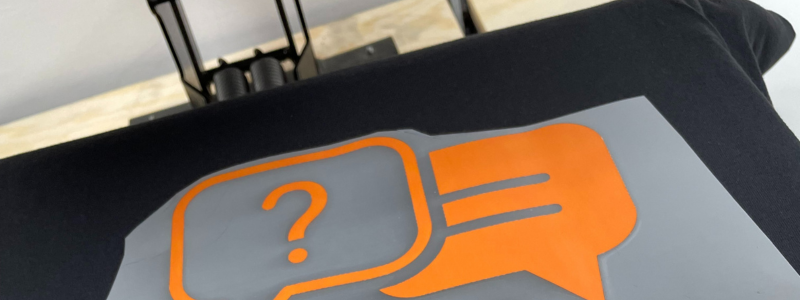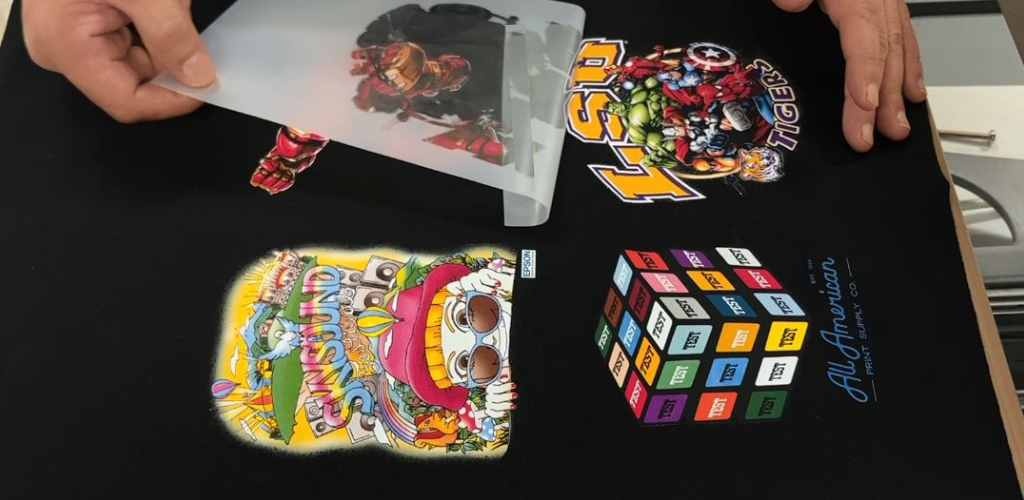For any PSP starting out or already well on the DTF printing journey, making sure your kit is in tip top condition and always ready is paramount. The rising popularity of this form of printing is showing no signs of abating and no wonder, when they offer such great results. And this is combined with easy operation, limited restrictions of fabrics, combined with punchy bright colours that don’t fade. It also requires relatively low investment and so the returns are quickly generated.
All good stuff!
What is not to like? Yet, there are some key things that can keep this happy momentum going that should not be forgotten. That is where regular and methodical maintenance of your kit will both improve the integrity of the machines, limit failures and reduce downtime.

Maximising the productivity of your DTF printer involves several key practices:
The Environment: Consider the space you are operating in. It is important to control the temperature and humidity – ideally you are looking at 25-30oC with a humidity of 40-60%. Make the room clean and dust-free as you want to prevent the print head from clogging or dust landing on the printing layer and contaminating it. You also need to consider preventing indoor moisture as much as possible by closing doors and windows in the morning and evening and particularly on cloudy or rainy days.
Routine Maintenance: Keeping the printer clean and well-maintained by following the manufacturer’s guidelines, may sound obvious, but don’t let standards slip as complacency steps in. If the DTF printer has not be used for more than three days, moisturise the print head and make sure it is cleaned at least once a week. This involves moving the carriage to the cap station, then carefully using a cotton swab with cleaning fluid to clean the dirty waste ink. Alternatively, you can use a clean non-woven cloth dipped in distilled water (or it is event better to use cleaning fluid) to wipe off the dirt. Add grease to moving parts and clean guide rails, wipers and encoder strips.
Optimal Settings: Adjust and refine the printer settings according to the different types of merchandise you are working on. Take time to fine-tune parameters such as resolution, ink density, speed and temperature for pressing.
Use Quality Films and Inks: Invest in high-quality DTF films and DTF inks. Opting for lower priced or quality can be appealing but can equally lead to more frequent issues. No one wants to face increased downtime and the associated increase in costs that can occur. Also keep an eye on ink levels and if the alarm sounds, make sure additional ink is added to avoid sucking air into the ink tube.
Batch Printing: Take time to organise jobs into similar batches. Focus on optimising the printing process by reducing the setup time for each job and will also make the most out of each printing cycle.
Preparation and Organisation: Make sure all designs and merchandise are completely prepared and organised before starting the printing. This includes having the artwork ready, promotional merchandise properly prepped and printing area organised to streamline the process.
Workflow Optimisation: Implement an efficient workflow, from the very beginning of design creation to printing and post-processing. If you can use software solutions for design, colour management and RIP which all help significantly speed up the process. Consider software solutions that can automate certain processes and integrate with your printer.
Training and Skill Development: Don’t skimp on the training! Ensure your team operating the DTF printer is well-trained. The more knowledgeable the operator, the more likely they will be able to troubleshoot common issues, maintain the machine better and optimise its setting for the different projects.
Testing and Callibration: Regularly perform test prints and calibration to ensure the printer is operating at its optimum performance level.
Shut and Close Operation Properly: Don’t just switch everything off! It may take a few minutes longer to turn off the software control and then the main power switch, but this will maintain the integrity of the kit. It will make sure the carriage finishes in its normal position, and the ink stack and print head are properly connected. It is recommended to be patient and wait until the printer is completely shut down before then turning off the power and best not to unplug it immediately to avoid any potential damage to the PC technology.
Inventory Management: Finally keep an organised inventory of films, inks, powder and other necessary supplies. Avoid running out of essentials which impacts production.

Adopting these principles will maintain the calibre of the kit, making sure it is always ready in tip top condition to take on your next project. And while, all the way through, we have been talking about maximising productivity, it is just as important to balance this with speed and quality. Rushing any stage of the process might compromise the final output quality and affect the final merchandise’s appeal.


